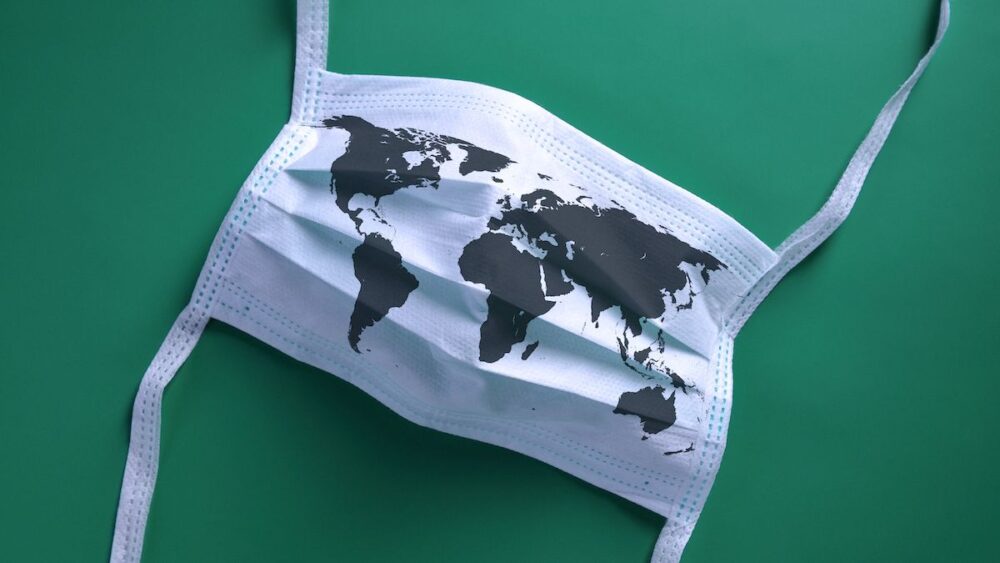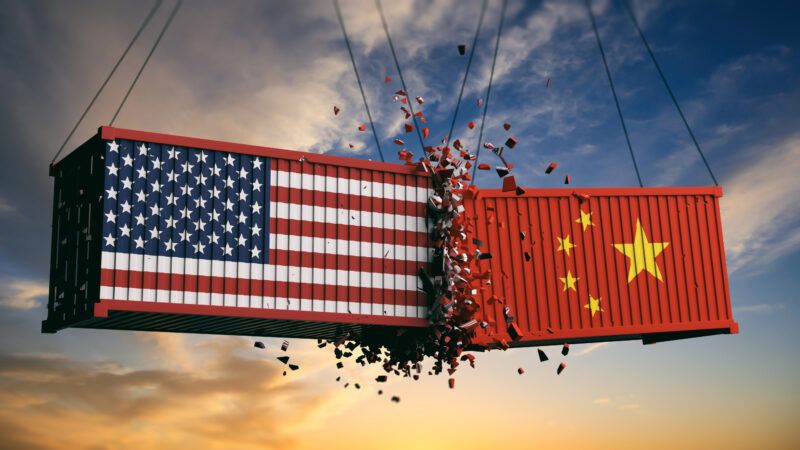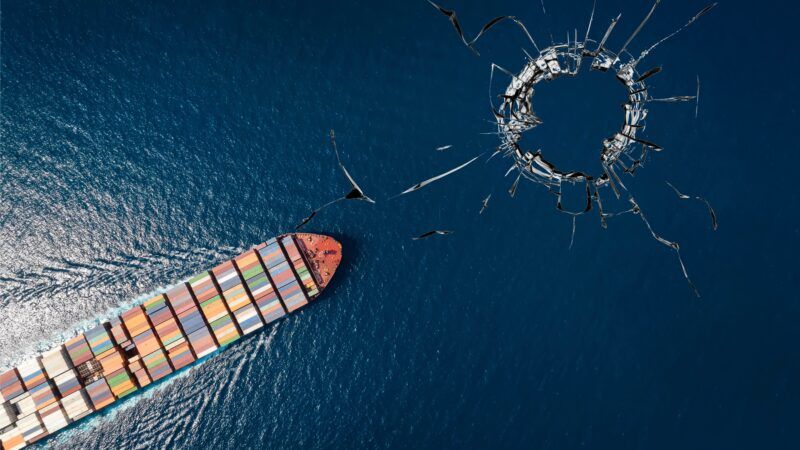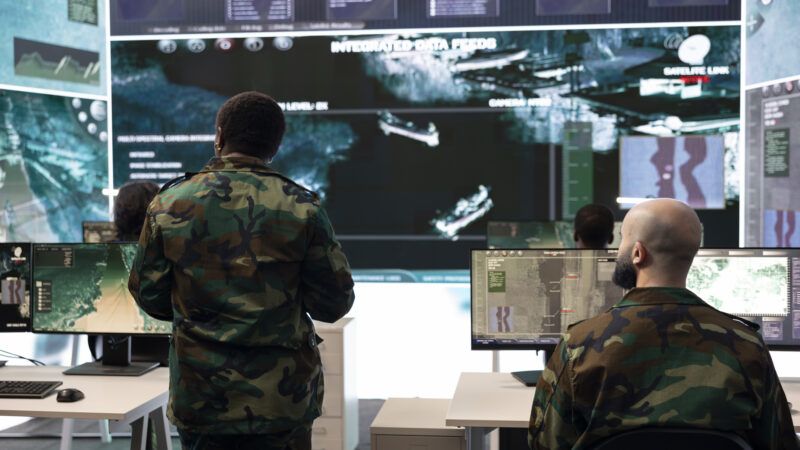 Globalisation and the planet’s interconnectedness have made this a global crisis worse than the once experienced in 2008. (Gettyimages)
Globalisation and the planet’s interconnectedness have made this a global crisis worse than the once experienced in 2008. (Gettyimages)
Ports in the post-coronavirus era: three future scenarios
The COVID-19 crisis is having a strong impact on global health and finances, the mid- and long-term repercussions of which remain unknown. Major crises like the one we are currently living tend to accelerate processes that in previous months or years were only in their early stages or developing slowly. Below we aim to shed light on the mid-term consequences the port sector should expect to face as a result of the coronavirus crisis. This we will do by sketching out several future scenarios. An op-ed by Jordi Torrent, head of strategy at the Port of Barcelona.

Jordi Torrent is the Strategy Manager at Port de Barcelona.
 Globalisation and the planet’s interconnectedness have made this a global crisis worse than the once experienced in 2008. (Gettyimages)
Globalisation and the planet’s interconnectedness have made this a global crisis worse than the once experienced in 2008. (Gettyimages)
The COVID-19 pandemic is having a strong global and local impact that is mostly affecting two fields: health and the economy.
The high contagiousness and fatality of this virus has made most of the affected countries’ governments adopt measures previously unimaginable, the most noteworthy being the forced confinement of their populations. About a third of the world population has been subject to this sort of strict policies. The goal is to avoid the deaths of thousands of people by reducing the risk of mass contagion and not overwhelming the health system.
All these measures have brought economic activity to a halt worse than the one that caused the crisis of 2008 or others before it such as the one of 1993. If, as the northern hemisphere predicts, these measures are extended until summer, the economic downturn will reach levels comparable to those of even older crises, such as the one that preceded World War II or the Great Crash of 1929, which over the course of three years caused a 30% drop in the GDP of the United States and left about 50% of the population unemployed.
What the economy’s recovery capacity will be once the coronavirus is behind us is a mystery. It’s important to bear in mind that Europe and Spain needed about a decade to recover from the 2008 crisis.
We also don’t know how the virus will spread in the southern hemisphere, but the prospects are worrying. Neither do we know when we will have a vaccine or anything about the virus’s mutation abilities.
Globalisation and the planet’s interconnectedness have made this a global crisis worse than the once experienced in 2008, which mostly affected western countries. And its mid-term effects remain to be seen.

However, it’s safe to say that thanks to the competent management of the crisis carried out by some Asian countries (China, South Korea, Singapore), the economic consequences will mostly be felt only in Europe and the United States. It will also change the public opinion’s perception of which countries are better equipped to lead the global economy and manage future global challenges.
The present analysis aims to evaluate the different future scenarios that we could face based on one main variable: the duration of the health crisis caused by the mass contagion and, therefore, the duration of the extreme measures put in place to combat it, such as confinement and restrictions on mobility.
The analysed scenarios apply to ports and encompass all the economic fields they provide services to, i.e., international trade, cabotage, tourism, fishing, boating, logistics and leisure.
Future scenarios
Three future scenarios have been identified:
- Short-term crisis with a limited mid-term impact on port hinterlands
- Short-term crisis with a strong mid-term impact on port hinterlands
- Long-term crisis with a strong impact on port hinterlands
A long-term crisis, with confinement measures and restrictions on mobility such as the ones we are presently experiencing, would place an unrealistic burden on the economic fabric and lead to a long-lasting economic collapse. In this scenario, port hinterlands (international trade, tourism, logistics, fishing, etc.) would significantly contract over an extended period and eventually become oversized infrastructures filled with empty spaces and bankrupt terminals. Faced with this situation, ports would have to consider dedicating parts of their facilities to activities unrelated to their raison d’être.
1 - Short-term crisis with a limited mid- and long-term impact
In this scenario, the COVID-19 crisis will soon end in the west thanks to the confinement measures and restrictions on mobility, and there will be no upswings in the spread of the disease in the near future. There won’t be an upswing in the southern hemisphere either and the virus won’t mutate into a more aggressive form. The spread of the coronavirus to other countries and the southern hemisphere won’t have a strong impact on the economic activity of the northern hemisphere. Before the summer, or by the end of it at the latest, there will be no more restrictions on mobility nor confinement measures.
On a global level, the world will revert to the slow tendency towards growth experienced in 2019. The trade war between the United States, China and Europe will abate as a result of this new post-crisis scenario.
The economic activity of port hinterlands will slowly and steadily recover. Industry activity, with some exceptions, will return to the way it was before the crisis and consumption will surge.
In such a scenario, the economic contraction is expected to be small, but certain trends detected before the COVID-19 outbreak could accelerate or become more deeply entrenched.
The impact on port activity will be limited and, at some point in 2021, traffic levels will return to what they were in late 2019. Foreign maritime trade will go back to the way it was before the crisis. Port leisure activities will steadily increase, including the emerging nautical clusters, which are expected to gain ground. Passenger traffic might take a bit longer to recover and certainly won’t reach the levels of before the crisis until 2022 or later.
Cruise traffic, on the other hand, is expected to recover more slowly due to a combination of financial, psychological and health reasons, as is car export traffic, which could be partly compensated by an increase in vehicle imports. It’s worth noting that tourism will need at least an entire season to fully recover.
2 - Short-term crisis with a strong mid- and long-term impact
As in the first scenario, this one contemplates no upswings in the spread of the disease and, at the latest, restrictions would be lifted after the summer.
However, the entire world, and especially Europe, would be plunged into an economic recession. The profound effects of these months of inactivity, the drop in trust of markets and consumers, the impact of the coronavirus on the southern hemisphere, the reactivation of the trade war between the United States and China, a new public debt crisis and any other global and macro-economic factors spurred by the spread of the coronavirus won’t be remedied by the stimuli put forward by governments and central banks.

Relevant European industrial sectors will be forced to shut down and consumption will drop substantially. The fields that will be worst affected are the car, chemical, steel, tourism, consumer goods and construction industries.
In this scenario, port traffic could stabilise at around 2/3 of what it was in 2019 by late 2021, at least with regards to its main segments: containers, vehicles, passengers and liquid bulk cargo. The passengers segment will recover slowly over the following years. Steel, cement and coal traffic, among others, will suffer a definitive drop. Probably solid bulk cargo linked to the food industry will resist the most, along with certain liquid bulk cargo industries, and we might see a renewed interest in nautical activities.
3 - Long-term crisis with a strong impact
The coronavirus health crisis in Europe will be felt for a long time, even beyond 2020, which will imply extended periods of restrictions on mobility and economic activities. The unemployment rate will grow, and entire industries will disappear or substantially reduce their activity.
Europe’s economic decline would intensify and the industrial sector in the northern half of the peninsula would approach the critical limit of 10%. Consumption won’t recover.
Ports will see some concessions collapse, including vehicles, cruises and liquid and solid bulk cargo. Traffic will stabilise at around half or less than the total amounts of passengers, containers and vehicles registered in 2019.
In the short term, that is from 2021 to 2025, ports will free up space currently dedicated to container, solid bulk cargo, cruise and car traffic. In the mid term, the space currently dedicated to liquid bulk cargo will be freed up due to a drop in demand of petrol derivatives as a result of both the present crisis and the transition to a more sustainable traffic model.
What can be done?
In the short term, port traffic is expected to drop in all three scenarios to a greater or lesser degree when compared to the 2019 numbers.
Port income will also drop in all scenarios, substantially so in the second and third. But whichever the outcome we face, it’s important to make preparations now so that we will be in the best possible position when the situation improves.
All scenarios require we intensify certain policies to contribute to the recovery of the economic fabric on which ports depend: expanding markets to third countries; increasing the competitiveness of the port supply; heighten the cooperation between port clusters, as neighbouring ports are doing in northern Europe; energy transition; take advantage of the current crisis to put a positive spin on the image of the cruise and boating industries; position the Spanish port system as a regional hub for growing traffics, such as those related to food products, electric mobility, telecommunications, etc.
The second and third scenario also require ports seriously consider the need to adopt new activities unrelated to their traditional raison d’être, such as, to name a few examples, power generation, circular economy, semi-industrial activities, pre-commercialisation logistics, etc.
Every port, depending on the economy it serves and its competitive advantage, will have to adopt its own strategies to mitigate the effects of this unprecedented crisis and analyse what new activities and facilities will best serve their particular case.





